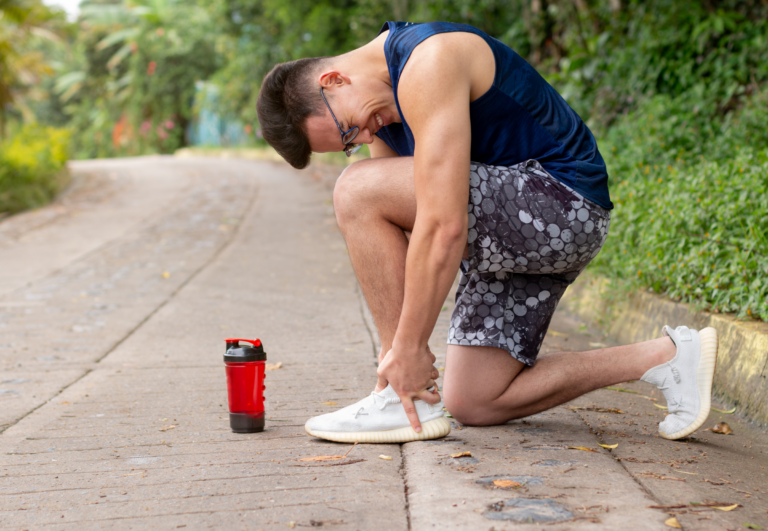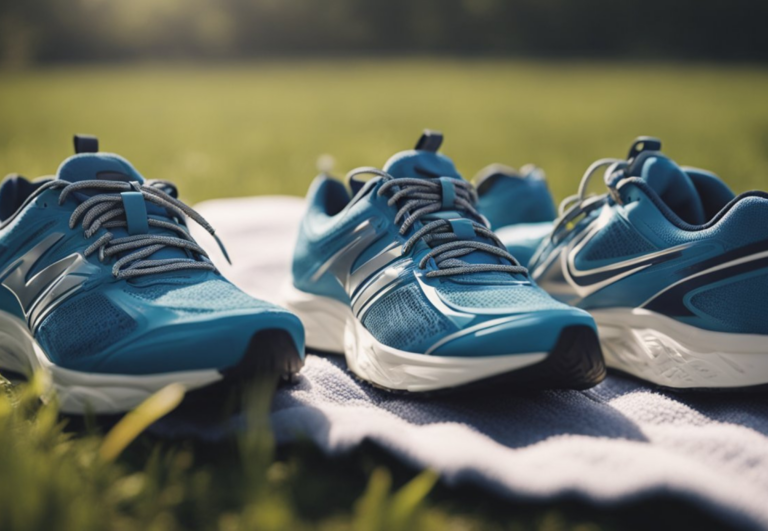How Much Cushioning Do I Need in a Trail Shoe?
When you’re trail running, the right shoe can make all the difference in your comfort and performance. The cushioning in your trail running shoes is a key factor that contributes to the overall fit and comfort. It’s not just about having a soft step – the amount of cushioning affects how you feel the trail beneath your feet and can influence your running style.
Selecting the appropriate level of cushioning is a personal choice that varies based on your preferences and physical needs. Some runners prefer a barefoot feel with minimal cushioning to maintain a natural foot position and better ground feel, while others opt for maximum cushioning to absorb impact during longer runs. It’s essential to try different options and listen to your body to determine what works best for you.
Remember, trail shoes are designed to handle uneven surfaces and provide the necessary traction and stability, so finding a balance between cushioning and functionality is key. Your shoes should help you tackle the trails with confidence, supporting both your feet and running style.
Whether you’re clocking miles on rugged terrain or navigating technical trails, the right amount of cushioning in your shoes is crucial for a comfortable and dynamic trail running experience.

An Overview of Cushioning in Trail Shoes
With extensive experience in trail running, let’s focus on the importance of cushioning for your trail shoes, aiming to enhance comfort and protection for your feet on varying terrains.
Cushioning Basics
Cushioning in trail shoes serves the primary function of absorbing impact as your feet strike the ground. The cushioning level ranges from minimal to maximum, affecting how you feel the trail. The term midsole is critical here, referring to the layer between the insole and outsole of the shoe providing this cushioning.
For adequate support, moderate cushioning is commonly suggested, balancing protection and ground feel.
Types of Cushioning: Minimal to Maximum
- Minimal: These shoes offer a close-to-ground feel, suitable if you’re comfortable with less protective padding.
- Moderate: An ideal choice that provides a middle ground with enough cushion to protect without compromising trail sensation.
- Maximum: Shoes like those from Hoka are known for maximal cushioning, offering substantial shock absorption, especially impactful on long runs.
Cushioned Midsole Technologies
Some technologies specific to trail running shoes are designed for energy return and a responsive feel. Brands like Altra employ various midsole materials that offer different levels of midsole cushioning.
EVA foam is a common material known for its light weight and cushioning effectiveness. These technologies aim to reduce fatigue, offering a springy step to keep your stride energized over distances.
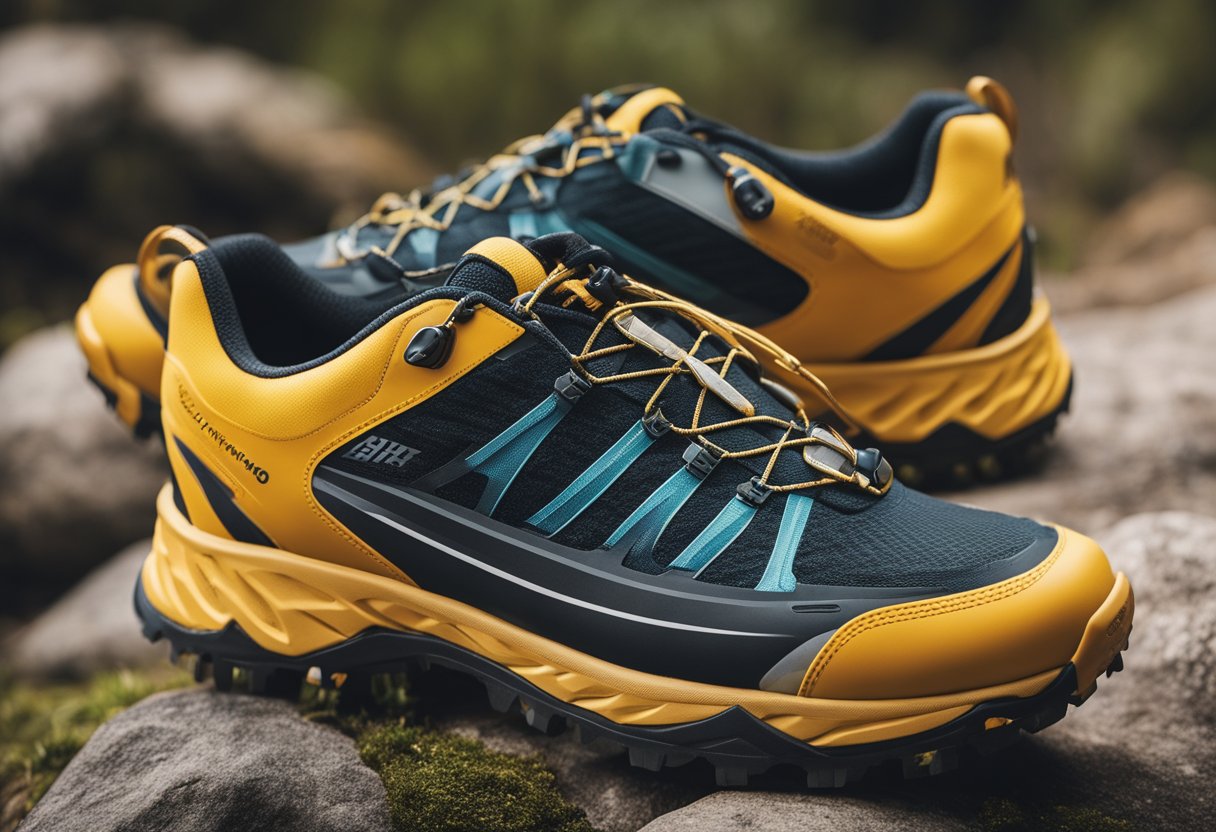
Assessing Trail Running Needs
When considering trail running shoes, it’s essential to evaluate two key aspects: your personal running style and the type of trails you’ll be tackling. This will ensure that your shoes provide the right balance of cushioning and traction for your unique needs.
Analyzing Running Style and Gait
Your gait is how your foot moves upon landing and pushing off the ground during a run. This pattern impacts the type of cushioning and support you’ll need. There are generally three types of foot strikes:
- Heel strike: Your heel hits the ground first. Extra cushioning in the heel might be beneficial.
- Forefoot strike: You land more on the balls of your feet, necessitating cushioning towards the front.
- Neutral: Your foot lands evenly. Balanced cushioning throughout the shoe is ideal.
It’s advisable to get your gait analyzed at a specialty running store to pinpoint your style and thus, the appropriate shoe features.
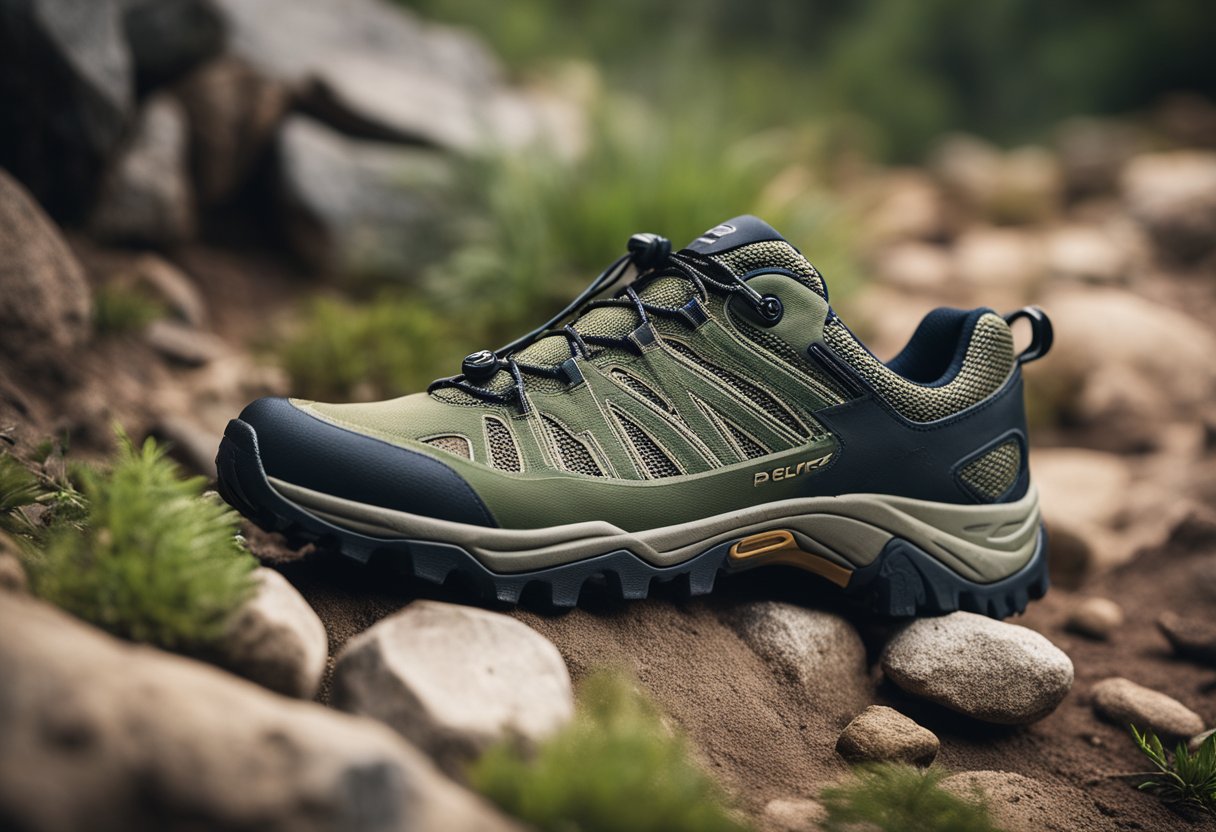
Trail Types and Shoe Traction
The variety of trails you run on dictates the level of traction and tread your shoes should have. A simple classification of trail types in relation to needed shoe traction is as follows:
- Smooth and groomed trails: Look for shoes with modest tread patterns.
- Technical and rocky trails: A shoe with aggressive lug patterns that can handle uneven terrain is essential.
Think of the lug pattern on your trail shoes like the tread on tires; deeper and more pronounced lugs generally equate to better grip in mud, gravel, and technical terrain. Keep in mind that while deep lugs improve traction, they can also affect comfort if you frequently run on harder surfaces.
How Cushioning Affects Performance
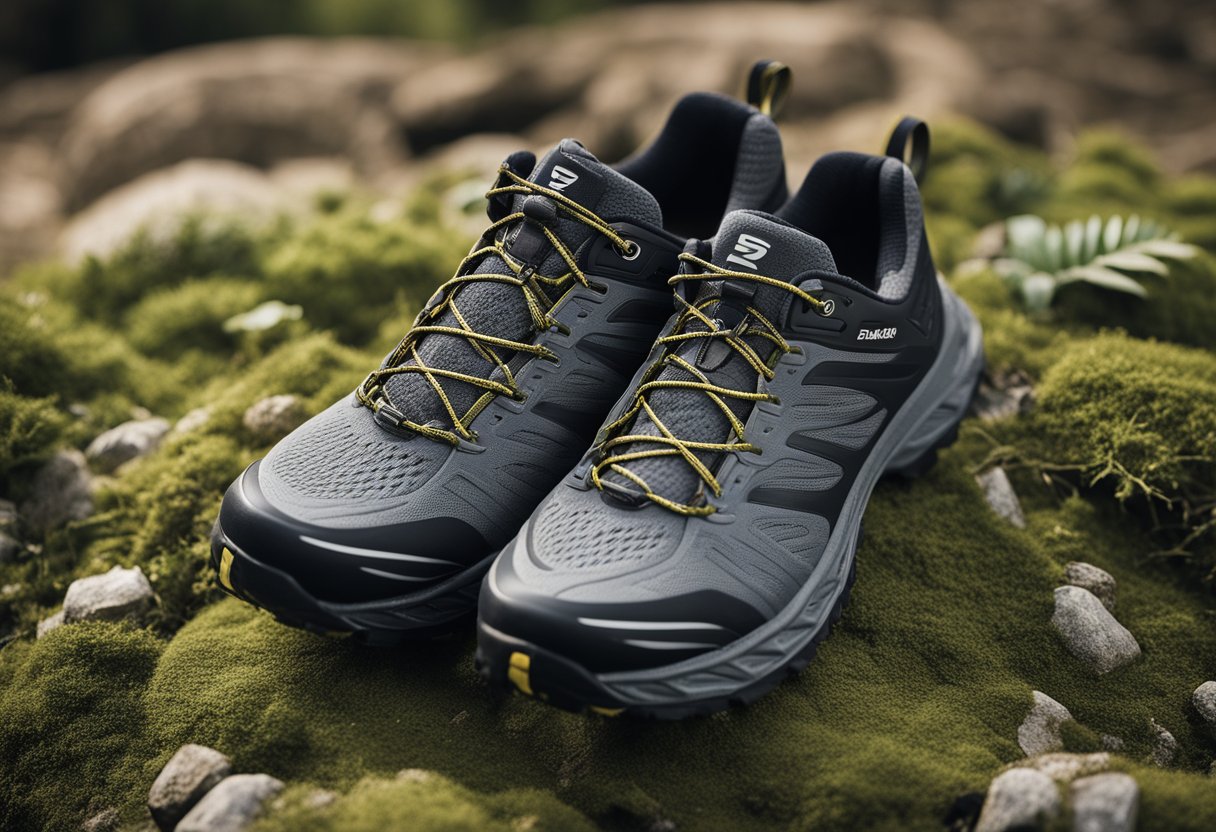
As an experienced trail runner, you know that cushioning in your trail shoes is a critical factor that can directly influence your running performance.
Whether you’re training for a marathon or sprinting across rugged terrain, understanding how cushioning impacts your speed, endurance, and the responsiveness of your shoes can help you select the best gear.
Impact on Speed and Endurance
Cushioning level in trail shoes plays a pivotal role in your races and performance. It contributes to comfort and energy return, which might enhance your endurance over long distances.
However, too much cushion can add weight and reduce the efficiency of your stride. On the other hand, shoes with appropriate cushioning can potentially provide a benefit by offering a slight bounce, contributing to propulsion and possibly increasing your speed.
It’s important to strike a balance that matches your personal gait and the demands of the trail.
Trail Shoe Responsiveness
In trail running, responsiveness refers to how well your shoe communicates terrain features back to you. The right level of cushioning can offer support and reduce harsh impacts, but if the shoe is too cushioned, it can mute important feedback from the ground, making it harder to adjust your stride on uneven surfaces.
A responsive trail shoe with moderate cushioning will have less stiffness, facilitating quicker reactions and adjustments during your run. This balance is particularly crucial in navigating the constantly changing conditions of trail races to maintain both speed and safety.
Selecting the Right Trail Shoe Cushioning

With a focus on trail running, you know cushioning plays a big role in comfort and performance. The right kind of cushioning can make your runs enjoyable and keep your feet in good health.
Determining Appropriate Cushion Level
Stack height is a term referring to the amount of material between your foot and the trail. While a higher stack height generally means more cushioning, it’s important to select a level that matches the terrain you’re tackling and your personal comfort preference.
Consider this: a lightweight shoe may sacrifice some cushioning but will provide better ground feel and agility, especially on technical trails. On the other hand, a shoe with a cushioned midsole offers more support and may help in reducing the impact on your joints during long or particularly rough runs.
Fit and Comfort Considerations
The key to choosing a shoe that feels great is to find the right size. Your trail shoe should offer a snug fit without restricting movement. The heel-to-toe drop, or just drop, should complement your natural running stance and not alter it dramatically.
Comfort comes from an ideal fit combined with the correct cushion level, creating a harmonious balance where no single aspect overpowers the other.
Shoe fit checklist:
- Ample toe room
- Secure midfoot
- No heel slippage
- Adequate arch support
- Comfortable liner and padding
When to Choose Maximum Cushioning
Maximum cushioning in a trail shoe can be a game-changer for runners venturing on long distances, as it can provide sustained comfort and reduce fatigue. If you often find yourself on rocky or uneven trails, maximum cushioning could also help in protecting your feet from the rough terrain.
However, keep in mind that the increase in stack height can reduce ground feel and stability, so they are best for regular paths or soft, muddy trails where you need that extra cushion rather than precision foot placement.
Taking Care of Your Trail Shoes
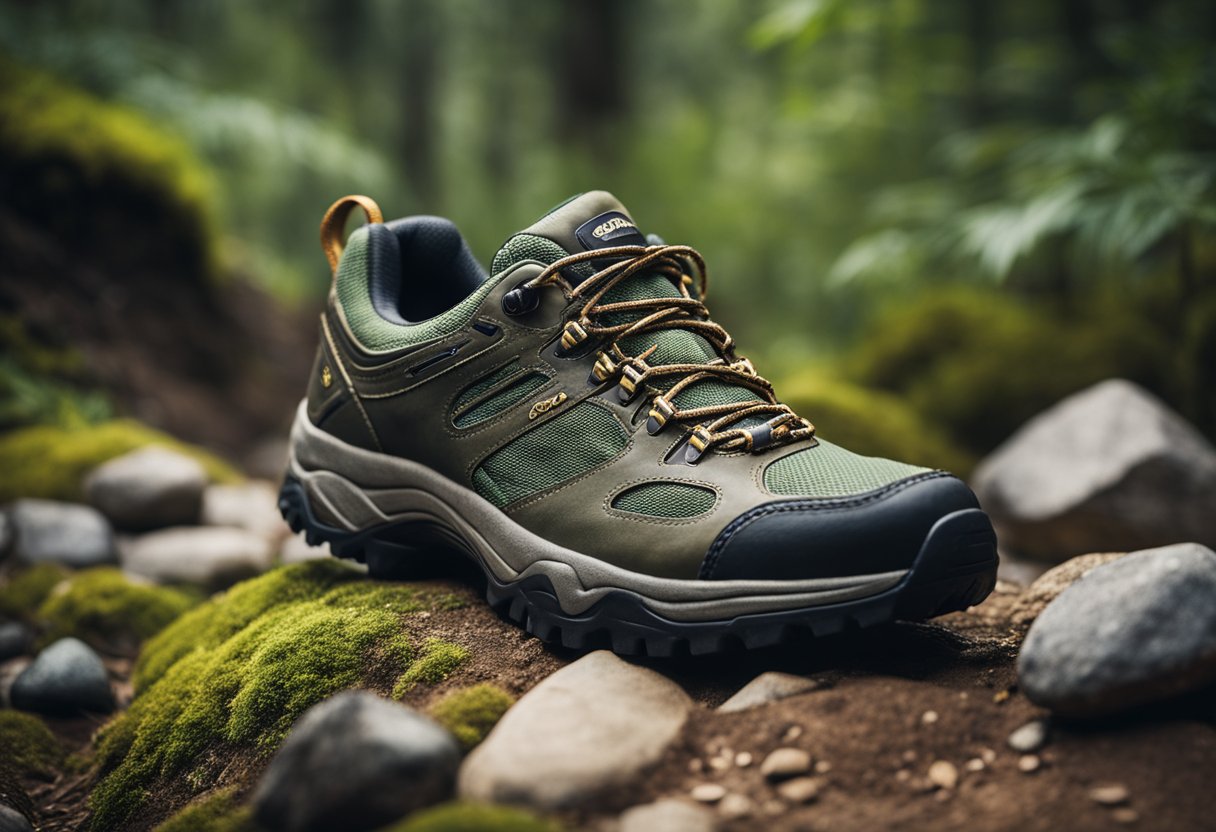
As an experienced trail runner, I know that taking proper care of your trail shoes is crucial. It ensures they continue to provide the support and protection needed while maintaining their cushioning and durability.
Maintaining Cushioning and Support
Your trail shoes are your allies on rugged terrain, and their cushioning is key for comfort. Over time, the midsole, which provides cushioning, can compress and effectiveness may diminish.
To extend the life of your shoes, clean them gently with a soft brush and mild soap after each run, and avoid machine washing. The outsole should be checked regularly for wear and tear to ensure that traction and protection remain uncompromised.
How to Maintain Cushioning:
- Clean regularly with mild soap and soft brush
- Dry away from direct heat or sunlight
- Rotate between pairs if possible, to let the midsole recover
When to Replace Your Trail Shoes
Knowing when to get a new pair is crucial for your safety and comfort. Typically, trail shoes last between 300-500 miles depending on usage, terrain, and build quality. When the outsole starts to wear down, traction decreases, and you’re more at risk of slipping.
A decrease in shoe cushion indicates it’s time for a visit to your local running store for a replacement.
Shoe Replacement Indicators:
- Outsole has visible wear, compromising traction
- Cushion feels less responsive
- Upper part shows significant wear and affects breathability or waterproof qualities
Monitoring the condition of your trail shoes and adhering to these care tips will allow you to enjoy many comfortable runs on your favorite trails.


